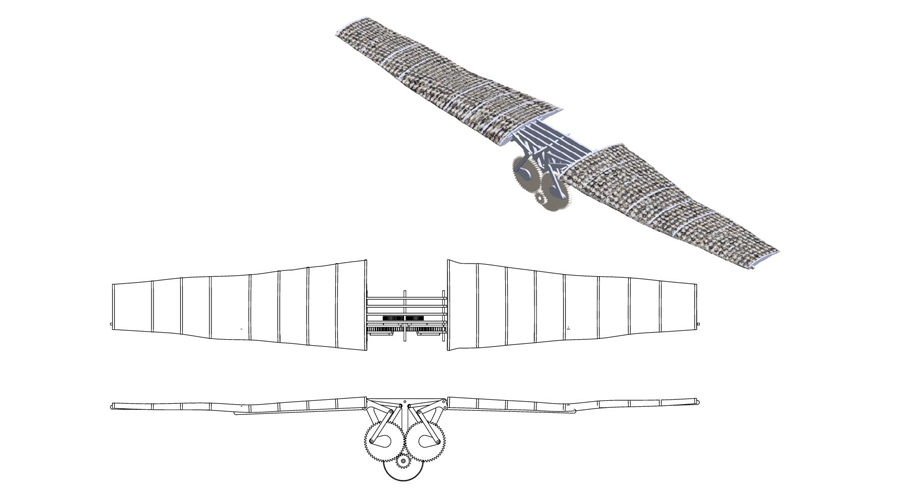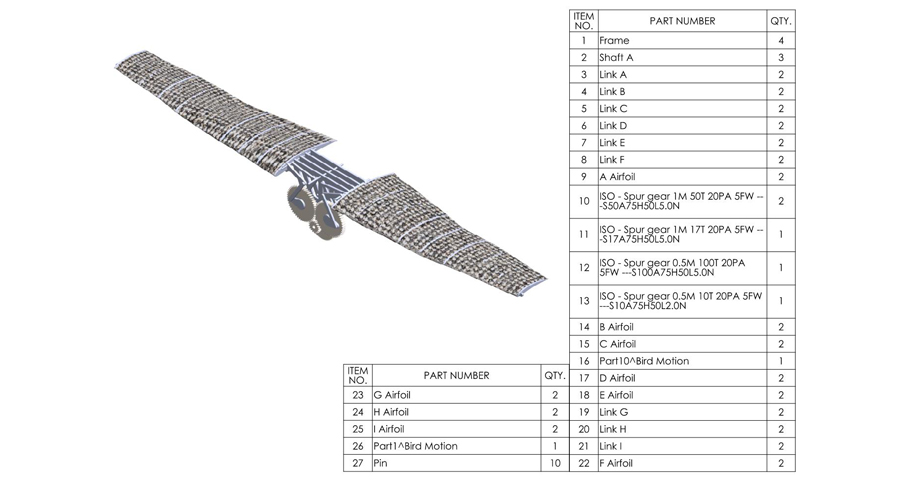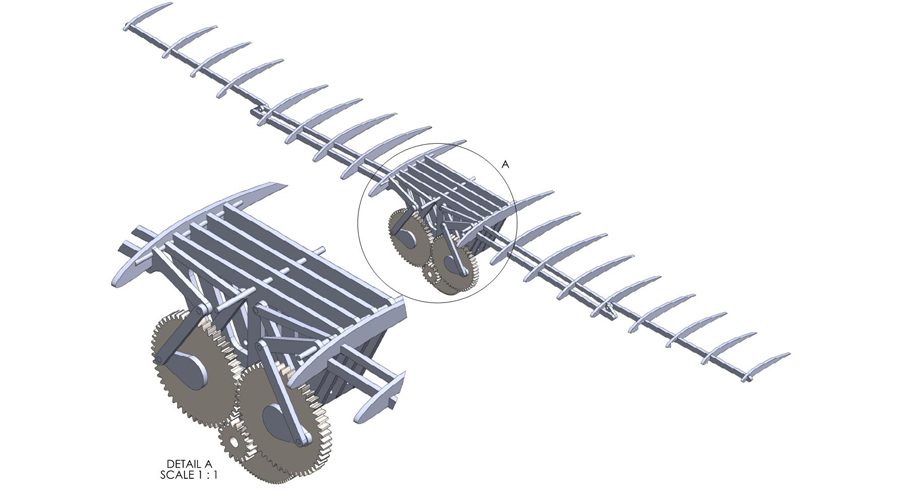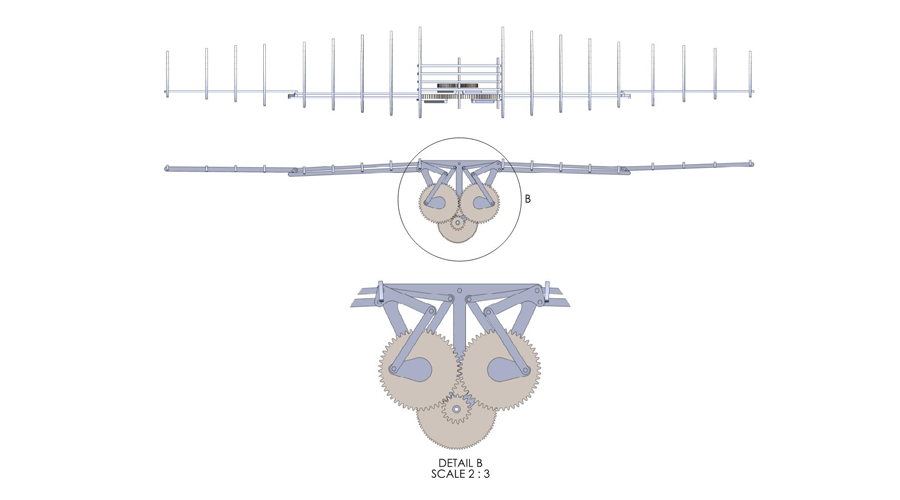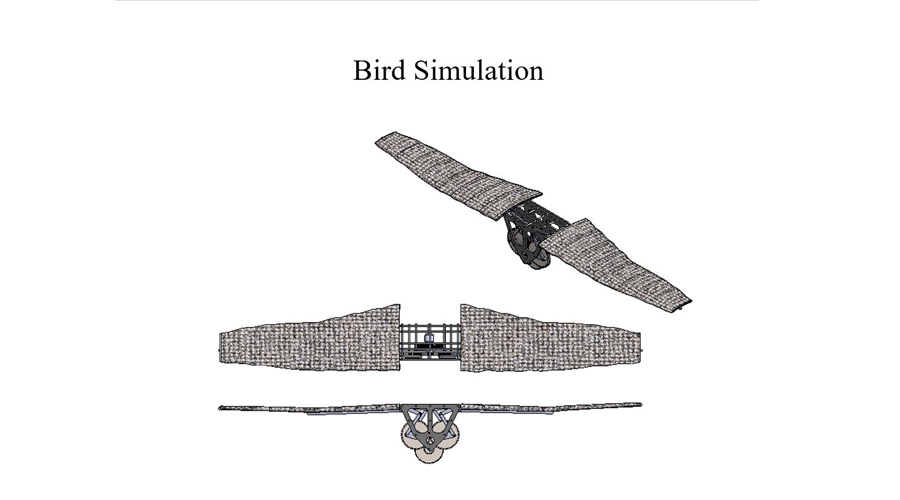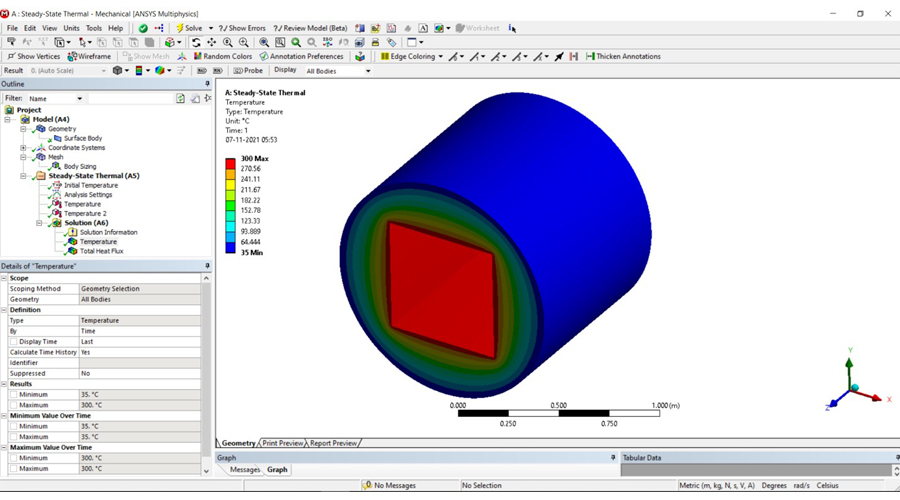To innovate, shorten time to market, reduce costs and easily validate design ideas predicting the future of transformational products.
Prerequisites:
Before learning Ansys software you should have a clear concept behind simulations and equations which usually you get a knowledge from theory guides.
Objective:
Ansys is a general purpose, finite-element modeling package for numerically solving a wide variety of mechanical problems. These problems includes different types of analysis like static/dynamic, structural, heat transfer, and fluid problems, as well as acoustic and electromagnetic problems.
- Introduction to FEA
- General Working of FEA
- Nodes, Elements, and Element Shapes
- General Procedure of Conducting Finite Element Analysis
- FEA through ANSYS
- Effective Utilization of FEA
- FEA Software
- Advantages and Limitations of FEA Software
- Key Assumptions in FEA
- Assumptions Related to Geometry
- Assumptions Related to Material Properties
- Assumptions Related to Boundary Conditions
- Assumptions Related to Fasteners
- Types of Analysis
- Structural Analysis
- Thermal Analysis
- Fluid Flow Analysis
- Electromagnetic Field Analysis
- Coupled Field Analysis
- Important Terms and Definitions
- Strength (Resistance to Deformation)
- Load
- Stress
- Strain
- Elastic Limit
- Ultimate Strength
- Factor of Safety
- Lateral Strain and Poisson’s Ratio
- Bulk Modulus
- Creep
- Engineering Materials
- Introduction to ANSYS
- System Requirements
- Getting Started with ANSYS
- Interactive Mode
- Batch Mode
- Starting a New File Using the ANSYS Product Launcher window
- Solid Modeling in ANSYS
- Solid Modeling and Direct Generation
- Solid Modeling Methods
- Bottom-up Construction
- Top-down Construction
- Considerations before Creating a Model for Analysis
- Details Required
- Symmetry
- Creating Geometric Entities
- Creating Lines
- Creating Arcs
- Creating B-Spines
- Creating Fillets between Intersecting Lines
- Creating Areas
- Creating and Modifying Work planes
- Display Working Plane
- Show WP Status
- WP Settings
- Offset WP by Increments
- Offset WP to
- Align WP with
- Coordinate Systems in ANSYS
- Global Coordinate System
- Local Coordinate System
- Active Coordinate System
- Display Coordinate System
- Nodal Coordinate System
- Element Coordinate System
- Results Coordinate System
- Creating New Coordinate Systems
- Deleting Existing Coordinate
- Advanced Solid Modeling
- Creating Volumes
- Extruding Entities
- Extending the Line
- Creating Complex Solid Models by Performing Boolean Operations
- Modifying the Solid Model
- Scale
- Move
- Copy
- Reflect
- Deleting Solid Model Entities
- Importing Solid Models
- Importing the IGES File
- Importing Models from Pro/ENGINEER
- Importing the Model from Unigraphics
- An Overview of the Finite Element Modeling
- Element Attributes
- Element Types
- Reasons Why ANSYS has a Large Element Library
- Real Constants
- Material Properties
- Multiple Attributes
- Assigning Multiple Attributes before Meshing
- Assigning Default Attributes before Meshing
- Modifying Attributes after Meshing
- Verifying Assigned Attributes
- Element Attributes Table
- Finite Element Modeling (FEM)
- Mesh Generation
- Mesh Density
- Meshing the Solid Model
- Setting Element Attributes
- Defining the Mesh
- Defining the Entity to be Meshed
- Defining the Meshing Type
- Meshing the Model
- Refining the Mesh Locally
- Extruding the Mesh
- Transitional Pyramid Elements
- Requirements for Creating Pyramid Elements
- Creating Transitional Pyramid Elements (Hex-to-Tet Meshing)
- Converting Degenerate Tetrahedral (20 nodes) Elements into
- Non-degenerate (10 nodes) Tetrahedral Elements
- Plotting Pyramid Elements
- Meshing the Beam with Orientation Nodes
- Creating the Beam Mesh with Orientation Nodes
- Creating the Beam Mesh with Two Orientation Nodes
- Improving the Tetrahedral Element Meshes
- Improving Tetrahedral Meshed Volumes by Using Volumes
- Improving Tetrahedral Meshed Volumes by Using Detached Elements
- Some Additional Tips while Meshing the Model
- Applying Loads
- The Nodal Coordinate System
- Loads in Different Disciplines
- Types of Loads in ANSYS
- Load Steps, Sub steps, and Time
- Applying Loads
- Deleting Loads
- Deleting DOF Constraints
- Deleting all Loads and Load Step Options
- Deleting all Loads Applied on Solid Model
- Deleting all Loads Applied on Finite Element Model
- Solution
- Defining the New Analysis Type
- Restarting the Analysis
- Setting Solution Controls
- Setting Analysis Options
- Solving the Analysis Problem
- Post processing the Result
- POST1 (General Postprocessor)
- POST26 (Time-history Postprocessor)
- Result Coordinate System (RSYS)
- Displaying the Deformed Shape of the Model
- Displaying the Minimum and Maximum Stresses
- Listing Reaction Forces
- Listing Stress Values at each Node
- Query Picking
- Path Operations
- Load Case Combinations
- Effect of self-weight on a cantilever beam
- Analysis of a bicycle handle
- Analysis of a stud (pin)
- Analysis of a master
Advanced structural analysis
- Steel tubes and springs structure
- Modal analysis of an airplane wing
- Nonlinear analysis (material nonlinearity)
- Advanced Structural Analysis
- Dynamic Analysis
- Performing the Modal Analysis
- Specifying the Analysis Type, Analysis Options, and Applying Loads
- Obtaining the Solution
- Reviewing Results
- Performing the Harmonic Analysis
- Specifying the Analysis Type, Analysis Options, and Applying Loads
- Obtaining the Solution
- Reviewing Results
- Performing the Transient Analysis
- Specifying the Analysis Type, Analysis Options, and Applying Loads
- Obtaining the Solution
- Reviewing Results
- Nonlinear Analysis
- Geometric Nonlinearity
- Material Nonlinearity
- Boundary Nonlinearity (Changing Status)
- Performing the Nonlinear Analysis
- Specifying the Analysis Type, Setting Solution Controls, and
- Applying Loads
- Obtaining the Solution
- Thermal Analysis
- Important Terms Used in Thermal Analysis
- Heat Transfer Modes
- Thermal Gradient
- Thermal Flux
- Bulk Temperature
- Film Coefficient
- Emissivity
- Stefan–Boltzmann Constant
- Thermal Conductivity
- Specific Heat
- Types of Thermal Analysis
- Steady-State Thermal Analysis
- Transient Thermal Analysis
- Performing Steady-State Thermal Analysis
- Setting the Analysis Preference
- Creating or Importing a Solid Model
- Defining Element Attributes
- Meshing the Solid Model
- Specifying the Analysis Type, Analysis Options, and Applying Loads
- Solving the Analysis Problem
- Post processing Results
- Performing Transient Thermal Analysis
- Specifying the Analysis Type and Setting Solution Controls
- Starting the ANSYS Report Generator
- Capturing Images for the Report
- Capturing Animations for the Report
- Capturing Data Tables for the Report
- Capturing Lists for the Report
- Compiling the Report
- Changing the Default Settings of the ANSYS Report Generator
- Error Estimation in Solution
- Percentage Error in Energy Norm (SEPC)
- Element Energy Error (SERR)
- Element Stress Deviations (SDSG)
- Maximum and Minimum Stress Bounds (SMXB and SMNB)
We provide all kind of services like helping students to their college projects, assignments, preparation for exams and the corporate professionals also on their company projects.
Caliber Training & Services- The Place for the Top ANSYS Courses Online
With a wide range of top Ansys coursesonline, tutorials, and video demonstrations, our ansys software training center near me can help you, your team, and your company discover the perfect ANSYS online training solution.
Ansys’ cutting-edge simulation technique allows innovative and ground-breaking product development when used to its full capacity.Also, Caliber Training & Services is the Simulation Training & Learning Hub, CFD, Flow simulation available for you!
Our paid mechanical simulation courses near me are intended to help you learn faster, hone your skills, and remain up to date with the newest technologies. The following courses are open to the public and involve lectures, hands-on workshops, and group Q&A sessions. Attendees will obtain an official training certification of completion upon completion of the course, and training hours may be used toward a Professional Engineering license.
What is the Purpose of the Ansys Training Program?
The goal of the Ansys training near me is to help every Ansys user get the most out of their software. Ansys’ cutting-edge simulation technology allows inventive and ground-breaking product development when used to its full potential. From “Getting Started” courses to deep-dive learning subjects, Ansys software training online has it all. The Ansys Training Curriculum is intended to help you accelerate your learning, improve your abilities, and stay current with the newest technology. To succeed on the virtual product development journey, choose the proper training option for you, your team, or your company.
The Training Options
Training for You
As a CAE expert who uses Ansys software for virtual product design and development, you may benefit from individual learning opportunities. Continuous training is essential for achieving and sustaining high productivity, particularly when a new project requires you to increase your skillset. Whether you’re just getting started or looking for fresh inspiration and depth, Ansys training gives you continual learning at our Ansys Software Training Center in USA. Stay ahead of the curve with Ansys to tackle new problems quicker and expand your knowledge base.
Training for Your Team
As a team leader, your goal is to help a group of engineers reach their full potential. As tasks and technology evolve, this requires pushing individual and group growth ahead. Individual demands vary depending on jobs and background, but the team as a whole needs a common practice to cooperate effectively and keep current with technology.
Training for Your Corporation
To get the most out of your software investment, you’ll need to spend in training. To lead the engineering workforce change from a corporate level, you’ll need a solid plan as an executive. Collaboration on multi-scale, multiphysics, system-level simulation technologies is required for many ground-breaking solutions.
With proven engineering workforce development solutions, Ansys can assist you. It all begins with access to the Ansys Learning Hub for the whole company, which can be expanded into a corporate learning and adoption program that fits your strategic goals.
Hundreds of training seminars, presentations, demonstrations, and tips & tricks videos are available to help you support and solve problems with today’s major design software, simulation tools, and industry themes. Caliber Training & Services is your Ansys trainer near me for all things Ansys, with 24/7 availability.
1 Review
Very Good I presented a situation that was, logistically, difficult to teach, but they pressed on and got me through my Ansys problem. I intend to come back with my future questions.

